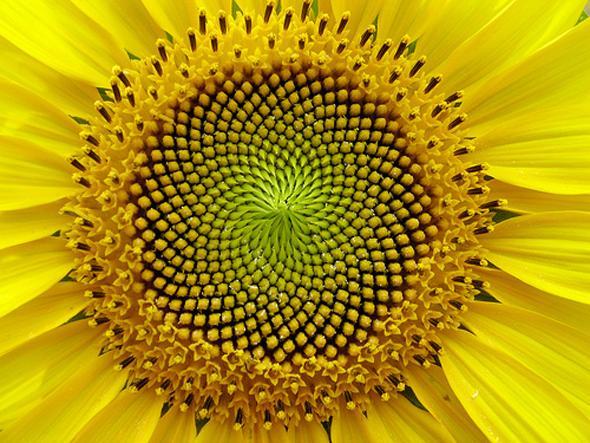Prabhupada, Tokyo, April 28, 1972: […] There is no question of chance. There is nothing like chance. This is foolish proposition. Everything… Just like this flower is coming. So there is immense manufacturing process. Suppose if you want to manufacture a flower like this, you have to secure so many things— the color, the ingredient, the paper, the brush, so many. Still, you cannot do like this. So if your nonsense, artificial flower takes so many instrumental assistance, brain, how do you think that this has come automatically? There is brain. It is not chance. You have no eyes to see. Therefore you call “chance.” Full Lecture
 “This ability, called phyllotaxis, can be described mathematically with the Fibonacci Series and the Golden Angle. The beautiful spirals in sunflowers, artichokes, cacti, dandelion heads and other plants continue to fascinate children and adults today, but those are not the only examples. “
“This ability, called phyllotaxis, can be described mathematically with the Fibonacci Series and the Golden Angle. The beautiful spirals in sunflowers, artichokes, cacti, dandelion heads and other plants continue to fascinate children and adults today, but those are not the only examples. “
Plant Patterns Prolong Perplexity | Creation Evolution Headlines
Posted on July 11, 2011 — Plants perform a wonder that has attracted the admiration of scholars from ancient Egypt, Greece and Rome to modern times: the ability to reproduce mathematically perfect patterns. This ability, called phyllotaxis, can be described mathematically with the Fibonacci Series and the Golden Angle. The beautiful spirals in sunflowers, artichokes, cacti, dandelion heads and other plants continue to fascinate children and adults today, but those are not the only examples. Leaves on a stem can emerge in phyllotactic patterns like a spiral staircase, and depending on the environment, plants can switch patterns at different stages in development. Scientists have learned a lot about the players in the phyllotaxis game, but still do not understand the script. The details of how genes and proteins produce the patterns remain elusive.
In Current Biology,1 French biologists Jean-Christophe Palauqui and Patrick Laufs recounted some of the theories that have tried to explain phyllotaxis. Scientists know that the plant hormone auxin becomes concentrated in the shoot meristem where new organ primordia emerge, and that the PIN1 auxin transporter is able to polarize the localization of auxin. New work reported in the same issue of Current Biology implicates the PLETHORA (PLT) gene family, known to be active with root formation, with the processes going on in the meristem. Tinkering with the players can enhance or inhibit pattern formation.
Full Article







Speak Your Mind